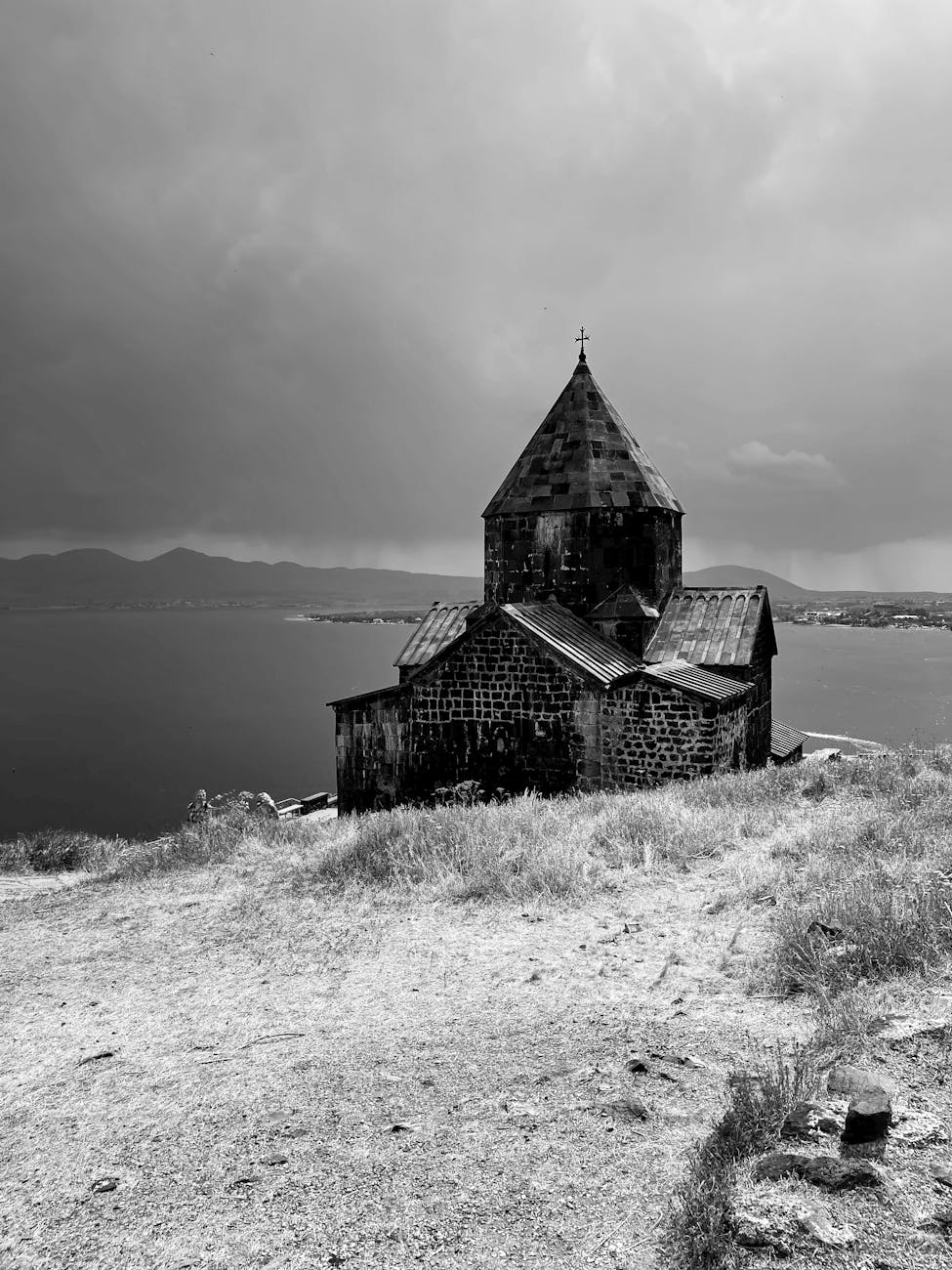Any visit to Armenia has to include a trip to Echmiadzin (or Etchmiadzin), which is the seat of the Armenian Church. This was the place where Gregory the Illuminator saw a beam of light fall to earth in a vision and where he built the first Mother Church of Armenia between 301 – 303. This is where the Patriarch of the Armenian Church, known as the Catholicos, has his palace.
Several renovations have taken place on the Mother Church of Armenia (between 2 – 4, depending on who you talk to). The church’s Northern Wall is the oldest, dating from the 5th Century, whilst two exterior reliefs, one of St Thecla and one of St Paul, are from the same period. In 1720, the church authorities added frescoes inside the church. In 1891, they removed the frescoes, but they reinstated them in 1956. Four large pillars dominate the interior, supporting the tambour, a cylindrical structure supporting the cupola.
The gardens contain outstanding examples of khachkars – carved memorial stones – the most common example of Armenian decorative art seen by travellers to the country. A khachkar’s key feature is normally a cross resting on a rosette, plinth, or sun disc. The lower vertical of the cross sometimes incorporates a Tree of Life motif and each limb of the cross ends in two triple-loops rather like leaves or petals. Geometric patterns cover the rest of the khachkar, although more natural patterns occur too. In 2010, khachkars, their workmanship and their design, were added to the UNESCO list of Intangible Cultural Heritage. Khachkars were normally used as burial stones or to commemorate a particular event, but I also saw them used as building material and incorporated in several monasteries.
The gardens were the haunt of hummingbirds and bees, taking advantage of the beautifully cared for flowers, which looked well watered and healthy even on a warm autumn day. Novice priests were strolling through the grounds, possibly heading to the seminary.
I headed to the Treasury to see some of the less palatable objects associated with religion, namely reliquaries containing the body parts of the apostles, Thaddeus, Peter, and Andrew. These parts are called relics and some people who visit Echmiadzin venerate them, but I’ve always found it hard to believe these relics can be ‘original’. As far as I am aware, St Peter never came near Armenia, as he was busy in Rome, so how did part of his arm make it here without the rest of him? St Andrew visited Georgia on his apostolic quest to convert the peoples of Russia, but it’s hard to believe he left an important part of him behind for the Armenians to worship. However, after Andrew was crucified in Patras in Greece, there seems to have been quite a trade in his skeleton, so it’s possible a finger or toe made it to Echmiadzin.
